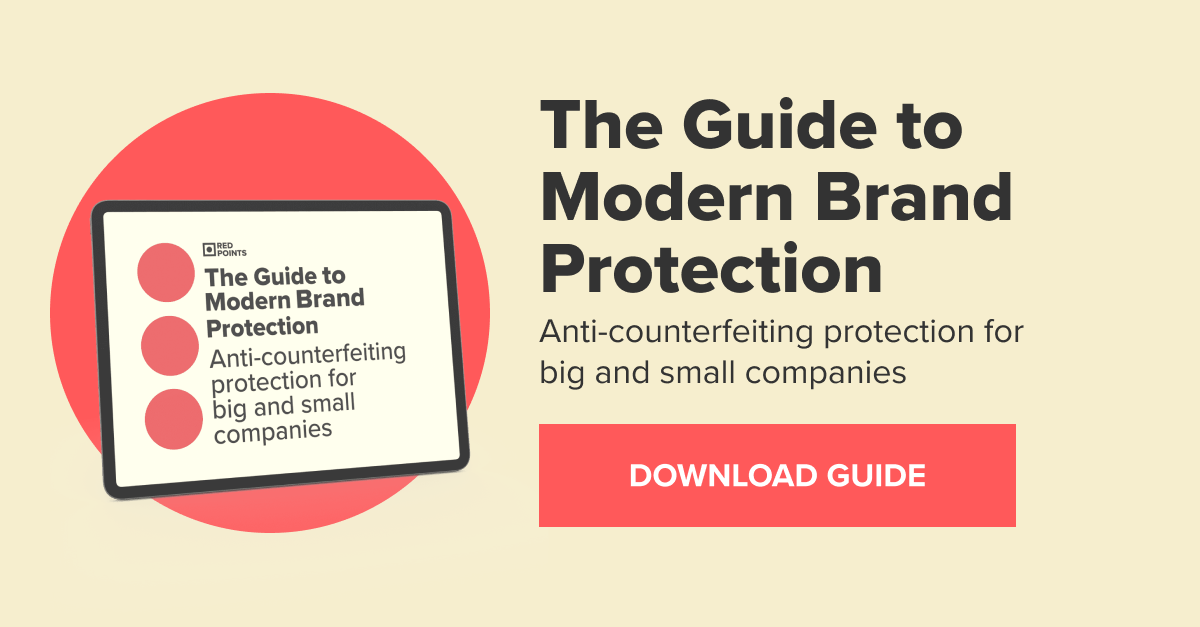Red Points’ examination of the various legal defenses to lawsuits based on trademark infringement.
Summary
- Descriptive trademark fair use allows words or images within trademarks of others to be referenced by society in their primary descriptive sense.
- Nominative fair use allows public use of terms or words in another’s trademark to describe or name the trademark owner’s goods or services.
- Expressive use of trademarks may permit use of trademarks in creative productions, such as plays, movies or books.
- Free speech and parody are protected under the First Amendment for non-commercial, communicative messages.
- Comparative advertising and First Sale Defense are protected as essential aspects of advertising and resale, respectively.
Trademarks allow trademark holders to identify and distinguish their products or services from their competitors’ and indicate to their consumers that products or services bearing said marks come from a specific source and are of similar quality. Given the important functions that trademarks serve, trademark owners are likely to bring trademark infringement actions against parties that use their trademarks or marks similar to their trademarks, which are likely to cause confusion in the minds of consumers.
However, there are several affirmative defenses available to a party sued for infringing on another’s valid trademark. This article summarizes the affirmative defenses such as descriptive trademark fair use, nominative fair use, expressive use, non-commercial free speech, parody, comparative advertising and first sale doctrine available to a defendant when facing a trademark infringement cause of action in court.
Descriptive Trademark Fair Use
Descriptive trademark fair use (15 U.S.C. § 1115(b)(4)) defense protects the rights of society at large to use words or images in their primary descriptive sense. 15 U.S.C. § 1115(b)(4) provides that the descriptive trademark fair use defense is available when one uses another’s mark otherwise than as a trade or service mark, or if another’s mark is used fairly and in good faith only to describe the goods or services or their geographic origin.
In KP Permanent Make-Up, Inc. v. Lasting Impression I, Inc., the U.S. Supreme Court noted that some possibility of consumer confusion compatible with fair use. The Court stated that the following factors should be taken into account in determining fair use:
- The degree of likely confusion caused by the descriptive use of another’s mark.
- The strength of the trademark.
- The descriptive nature of the term or mark for the product or service being offered and the availability of alternate descriptive terms.
- The extent of the use of the mark prior to registration of the trademark.
An example of descriptive trademark fair use is the use of the mark PIN in Pinterest Inc v Pintrips Inc. The court held that the PINTRIPS and PIN marks used by Pintrips did not infringe Pinterest’s PIN and PINTEREST registered trademarks because the defendant’s use of the PIN mark was descriptive of a feature of the service, that is the ability to pin locations on a map, not as a mark. The court further stated that the availability of alternatives for the term “pin” for tagging locations on a map did not make the defendant’s use of the mark less descriptive.
Nominative Fair Use
The nominative fair use doctrine refers to the use of a protected trademark to describe or “name” the protected trademark owner’s goods or services, rather than describing one’s own goods and services, which is the case in descriptive fair use.
Some examples of nominative fair use include the use of the mark “New Kids on the Block” by a newspaper for polling its readers to gauge the group’s popularity, or use of the mark “Boston marathon” in a news telecast reporting the event. Unlike descriptive trademark fair use, which is a statutory defense to trademark infringement, nominative fair use is a judge-made defense and federal circuits differ in how they apply the nominative fair use defense.
In the second circuit, nominative fair use is considered as a factor in determining the likelihood of confusion when evaluating the plaintiff’s case for trademark infringement but not as a separate affirmative defense that the defendant can avail.
In the ninth circuit, the nominative fair use test replaces the likelihood of confusion factors used to analyze trademark infringement claims, but like the second circuit, it is not a separate affirmative defense. The following factors are considered under the ninth circuit’s test for nominative fair use:
- The product or service referred to must not be readily identifiable without use of the mark,
- The user only uses so much of the mark as is necessary, and
- The user does not do anything to imply sponsorship or endorsement.
In the second circuit, under prong three, the user must not have implied affiliation as well as sponsorship or endorsement. Whereas in the third circuit, where nominative fair use is a separate affirmative defense, under prong three, the defendant’s conduct or language should reflect the true and accurate relationship between plaintiff’s and defendant’s products or services.
Expressive Use
Expressive use of a mark, that is use of trademarks in expressive works such as plays, movies, books etc., can also serve as a defense to trademark infringement.
However, this defense is not available in all federal circuits. Some circuits have held that truly expressive use of a mark will not cause confusion in the minds of consumers, and therefore, the trademark holder would not succeed in making a showing of trademark infringement in the first place, negating any need for the defendant to assert expressive use as an affirmative defense.
The following are two tests courts use when determining whether the defendant can successfully avail the expressive use defense in a trademark infringement suit:
- Alternative avenues test – Defendant’s use of a mark in an expressive work will not be protected from a trademark infringement claim if there are sufficient alternative means for an artist to convey his or her ideas. For example, in Dr.Seuss Enterprises v. Penguin Books USA, the use of Dr. Suess’ book to satirize the OJ trial was not found to be an expressive use because there were sufficient alternatives available besides using Dr. Suess’ work as a medium to mock the OJ trial.
- According to the test used by the court in Rogers v. Grimaldi, defendant’s use of a mark is protected unless it has “no artistic relevance” to the underlying work, or if there is artistic relevance, the usage does not explicitly mislead as to the source or content of the work. For example, defendant’s use of the title “Ginger and Fred” for their movie was artistically relevant because the movie was about two performers whose routine emulated the famous Fred Astaire and Ginger Rogers duo. Furthermore, the court also found that the mere use of Rogers’ name in the title contained no explicit indication that Ginger Rogers endorsed the film or had a role in producing it, and therefore, was expressive use of the mark.
First Amendment Defenses: Non-commercial Free Speech and Parody
The First Amendment non-commercial free speech defense applies when the unauthorized use of another’s mark is a part of a communicative message and not a source identifier, and the mark has entered the public discourse and become an integral part of its vocabulary. Such marks assume a role outside the bounds of trademark law.
Trademark owners do not have the right to control public discourse when the public imbues their marks with a meaning beyond its source-identifying function. Where a mark assumes such cultural significance, First Amendment protections come into play.
For example, in Mattel, Inc. v. MCA Records, Inc., the portrayal of Barbie in the Aqua song as a perfect beauty idol with little independent thought was found to be non-commercial free speech use of the Barbie mark.
First Amendment defense also applies when the defendant’s use of a mark is to parody the plaintiff’s mark. Courts have found that a good parody conjures up the parodied trademark but does not confuse as to source or affiliation.
There are case examples of applying a parody defense to trademark infringement For example, in Louis Vuitton v. My Other Bag, Inc., the court found that the parody of Louis Vuitton’s luxury image was the very point of My Other Bag’s plebian product and such use of Vuitton’s mark did not confuse consumers into believing that My Other Bag’s cloth bag was indeed a Louis Vuitton product, or in any way affiliated with Vuitton’s luxury products.
Other Affirmative Defenses to Trademark Infringement: Comparative Advertising and First Sale Defense
Use of another’s mark in comparative advertising is also protected because comparison is an essential element of advertising. Protections of comparative advertising in law are enforceable so long as it does not contain misrepresentations or create a reasonable likelihood that purchasers will be confused as to the source, identity, or sponsorship of the advertiser’s product.
The first sale doctrine allows a defendant to resell a plaintiff trademark holder’s goods as long as they are clearly labeled as being repackaged, so that they do not create point-of-sale or post-sale confusion. For example, in Enesco Corp. v. Price/Costco Inc., the court found that Costco could repackage and sell the Enesco figurines, but that it was required to place labels on the packages that disclosed to the public that Costco had repackaged Enesco’s original product so as to not infringe on the Enesco mark.
Conclusion
In conclusion, there are several affirmative defenses available to a party sued for infringing on another’s valid trademark. Both trademark holders and potential defendants should consider the availability of affirmative defenses to trademark infringement such as descriptive trademark fair use, nominative fair use, expressive use, non-commercial free speech, parody, comparative advertising and first sale doctrine available to a defendant when contemplating or potentially facing a trademark infringement lawsuit.







